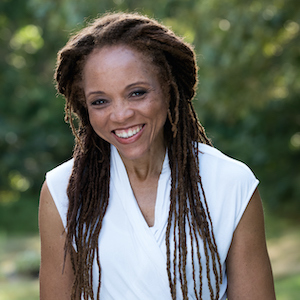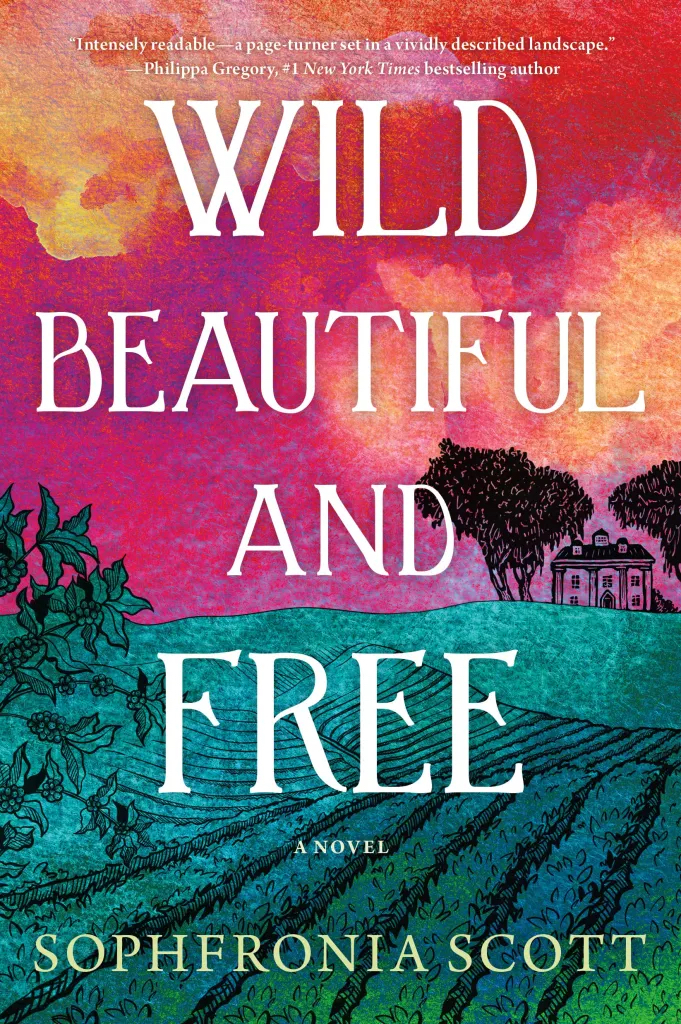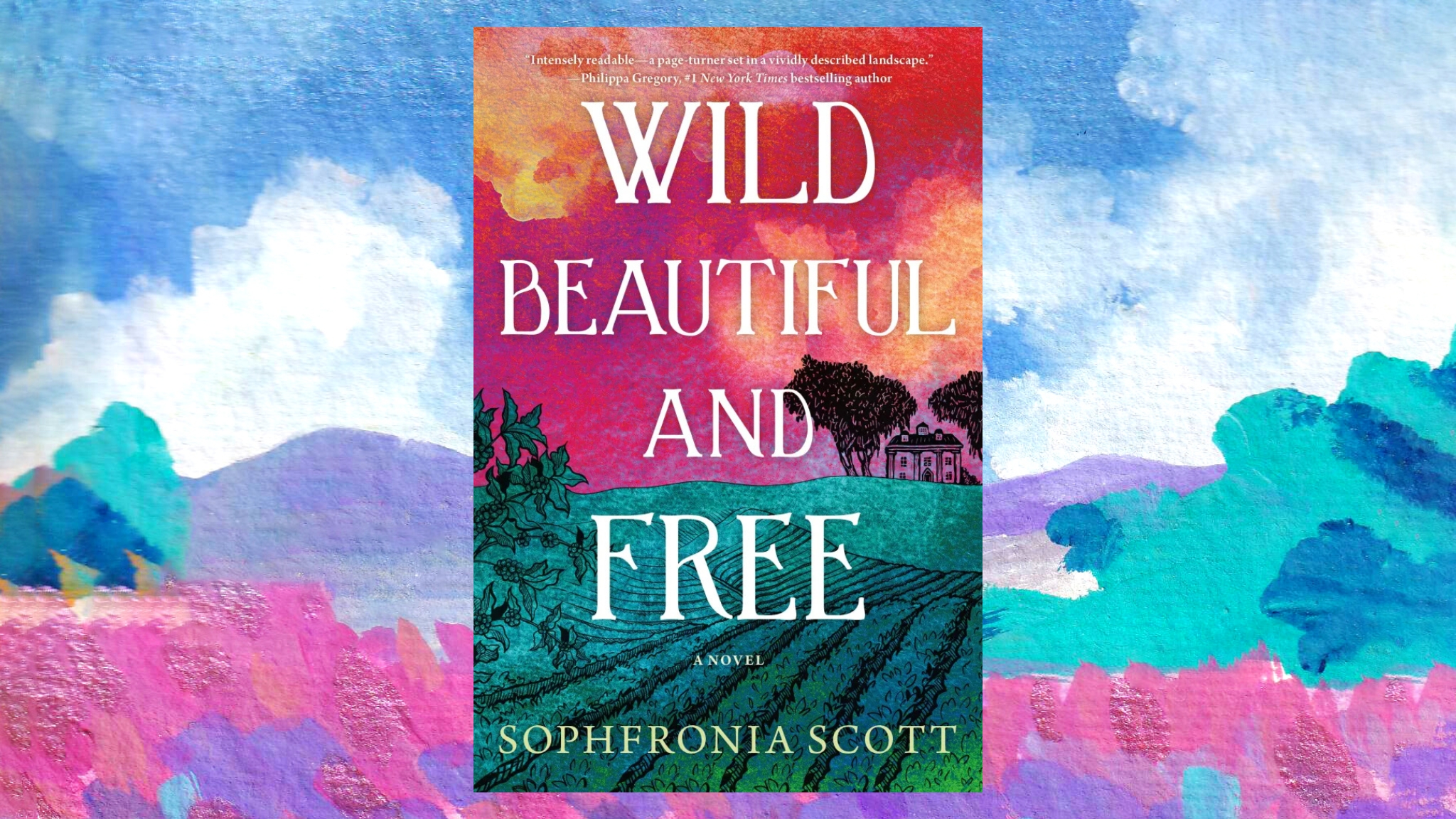Wild Beautiful and Free by Sophfronia Scott
What's It About?
The story of one young woman’s bold journey to reclaim her birthright and carve out her own place in a world that tells her she doesn’t belong.A beautiful, and well-written story that is fast-paced, emotional and purposeful, Wild Beautiful and Free tells the story of a determined young girl of mixed race, born to an enslaved woman and a plantation owner during the Civil War.
Learning about love, family and integrity from her beloved father when she was a child, Jeannette is on a quest to return to where she feels at home after being sold into slavery by her stepmother and sent down south. She knows what she wants and what she deserves and Jeannette won’t accept anything less. Lots of lessons can be gleaned from this retelling of Jane Eyre; we see Jeannette speak up for herself, forgive others and live her truth as she seeks love. I recommend Wild Beautiful and Free, an empowering and moving novel.
Video Interview with BookNationByJen
I had the wonderful opportunity to sit down with Sophfronia Scott to discuss her heartfelt novel Wild Beautiful and Free, her writing process, and the book she wrote with her son. Please watch the recorded conversation and see the written Q & A below.
Q&A with Sophfronia Scott
Have you always been a writer?
Yes, but I didn’t know that’s what I was or what I was doing. I started as a child playing with words and copying out the words of my favorite books. Then I started making up my own stories.
What inspires you to write? Where do you get your ideas?
Inspiration, for me anyway, is kind of like filling a class of water. The water is all the influences, images, thoughts, observations that I take in. When the glass begins to overflow, it’s like I can’t NOT write. The words come, the characters begin to speak.
How long did it take you to write Wild Beautiful and Free? Did you share this book with anyone in a writing group or your students before it was published?
The idea for the book has been with me, on my heart, for several years. When I finally began to work on it, it took me a few months to write the proposal and once it sold, it took about 18 months to write. Only my editor, Danielle, and a bookstore owner in Alma, Michigan read the first draft of the book.
When I saw you read an excerpt from your book about Jeannette at your book launch, you got visibly emotional and clearly moved by the written words. That was a special moment – you, baring your heart while sharing your own powerful words written from the heart. Had that ever happened before and do you get emotional during the writing process?
I think that was the first time it happened while reading fiction. My nonfiction can be pretty emotional. But yes, I can be in tears when writing. The characters in WBF are meant to have close connections with each other and they say important things. Connections like that make me emotional.
Do you create an outline and know where your story is going ahead of time? You have lots of characters Jeannette meets along the way – how do you keep track?
I like to start with a general outline because an outline helps me figure out two things: 1.) Where the climax moment might happen in the book and 2.) Does the story work? Can it move and hold the reader’s attention for 300 pages? Once I know this I can start writing. I don’t always keep to the outline because I make discoveries while I’m writing and characters develop and change. But having that initial structure helps shape the book.
Wild Beautiful and Free has been compared to Jane Eyre – can you briefly tell us the story of Jane Eyre and how the two stories are similar and different?
Jane Eyre is the story of an orphan who becomes a teacher and eventually a governess in a house owned by a man named Rochester. She falls in love with him, but discovers they can’t marry so she runs away from him.
I read Jane Eyre when I was about 13 and it had a huge influence on me, particularly in the parts where she was trying to figure out how to find a new position when she wants to leave the school where she had been since a child. There are several paragraphs devoted to her ruminations and those parts taught me how to think, how make decisions and have agency in my life. I wanted to write a heroine like Jane, but have her be a woman of color.
Wild, Beautiful, and Free is similar in that it features a girl on her own in the world who eventually becomes a teacher and falls in love with a man. But Jeannette’s experience is much more harrowing than Jane’s. Jeannette is sold into slavery, she plans a daring escape and eventually gets involved with the Civil War. Because of this, she has aspects of an action hero: she acts to protect loved ones, she carries a weapon, she endures the dangers of the battlefield. The book moves a lot faster than Jane Eyre.
Jeannette is a strong and wise young girl. Are there any parts of you evident in Jeannette?
All writers have aspects of ourselves in our characters. The challenge is to let them grow into entities separate from us. But the part where I feel Jeannette and I are most the same is when Jeannette, as a girl, says something like “but they should know better!” because she’s always been told that, and it bewilders her that adults, who really should know better, can behave so badly. I felt that way at her age and in many ways, I still do.
Jeannette and Calista have a close sisterly relationship, but I can’t help thinking if Jeannette had been the white daughter she may have stood up and fought harder for her mixed race sister. What are your thoughts?
Well, that’s really a “nature versus nurture” question. Calista is obviously not raised in the same way as Jeannette, and doesn’t spend the same amount of time with their father. Would Jeannette still be a fighter if she were raised to be a hot house flower like Calista?
I think we should still give Calista credit, though, because she made life difficult for her mother after Jeannette is sent away.
Christian Colchester initially is not of the same mindset as Jeannette – he is okay with passing as white when we meet him. Jeannette is able to recognize that she has no interest being part of that charade. What makes him change?
A few things: His admiration of Jeannette, his experience of war, and, eventually, the mentorship he receives during the war from a mixed race man who helps Christian with his identity issues.
I noticed toward the end of the book when Jeannette is thinking about her relationship she left behind she refers to him as Mr. Colchester rather than Christian. Why, in her thoughts, does she think of him so formally?
That’s sort of a nod to Jane Eyre. Names are not just names during this time period—they signify one’s connection to another person. When Jane realizes she can’t marry Rochester, then he stops being Edward to her and becomes Mr. Rochester again. It’s like she’s not allowed, even in her mind, to have the intimacy of thinking of him by his first name.
Jeannette is doing the same thing — the time frame of these two stories aren’t that far apart — but she is also calling him Mr. Colchester in her mind as a way of separating herself from him and becoming consoled to the fact that he is not hers.
Jeannette has a positive influence and helps so many – from nursing to teaching. How was she able to remain so focused and productive during the war after all the hardship she had gone through?
What would have been the alternative? If anything, maybe the war provided her with focus and purpose. She would have been floating around, figuring out where to be next. But the war is so “in your face” that from the moment she’s takes the reins of the horse in that battlefield, she must be present and focused. She couldn’t be anything else.
Silas was a good friend to Jeannette and he was interested in having her be with him in Atlanta. What do you think would have happened if she agreed to go? How did she get to be so brave as to turn him down and continue on her own?
If she had gone with him, she probably would not have stayed long. She would have questioned what she was doing, questioned her attachment to him. Even when they escaped together she didn’t feel bonded to him. As she says from the opening of the book, she knows what it is to be loved and she can’t accept anything else. Silas, for all his words, never loved Jeannette.
It was such a relief when Dorinda found Jeannette and I even shed a few tears toward the end of the book when I learned of her fate. I interpreted all of the women’s relationships to be more important to Jeannette that the relationships and friendships with the men (including Christian). What are your thoughts?
Some of this was just a function of the time. Men and women didn’t have as many casual or platonic relationships as we do now. The main people Jeannette would have spent time with, aside from her father, enough to develop deep relationships, would be women.
How did you do research for this book?
With lots of books! But really, I began with a big general sort of research about the time period, about Louisiana in the 1850s, and about the lives of slave girls and Civil War nurses. I also did a lot of research for names of the time period so I could name my characters properly. That was enough to get me started writing. I would drill down and research for specifics once I got to certain parts of the book that required them.
For example, once I got to the Civil War parts of the book, I had to figure out which battles to feature. Which would be located where Jeannette would be, and what happened during those battles that I could use in the story? That could slow me down quite a bit but since I had a sense of what I was looking for I could rule things out. There was no reason to research Gettysburg deeply, for example, if it would only be mentioned in passing.
How did you working with Lake Union Publishing come about?
My agent suggested sending the book there and we had an initial meeting with the editorial director who became my editor. I had my doubts, but she loved the idea and I felt we could work well together. She and the whole team at Lake Union have done an awesome job on the book.
The cover is gorgeous. Can you tell us about it? Did you have an impact on how it looks?
The cover is designed by Lesley Worrell. My editor sent several concepts but this cover was so striking, it stood out right away. Everyone on the team loved it. My only input was about adding the trees near the house. The initial draft had no trees and because I mention trees so specifically and lovingly in the manuscript I felt they should be on the cover and suggested that. I was so pleased when my feedback was taken and the trees appeared.
What have you read lately that you recommend?
The Vanishing Half by Brit Bennett – I think this book is so much better than her first. It was exciting to see how much the author has grown, how she is mastering her craft.
One Long River of Song: Notes on Wonder by Brian Doyle – These essays offer a strong dose of hope as well as wonder. Doyle, who died a few years ago, was a brilliant, inspiring writer.
Do you have another project in the works?
Yes, another novel, again historical fiction. But I also have an essay I’m trying to nail down so both are on my mind.
This story appears through BookTrib’s partnership with BookNationByJen. It first appeared here.
Check out other posts from BookNationByJen
About Sophfronia Scott:
 Sophfronia Scott is a novelist, essayist, and leading contemplative thinker whose work has received a 2020 Artist Fellowship Grant from the Connecticut Office of the Arts. Her book The Seeker and the Monk: Everyday Conversations with Thomas Merton won the 2021 Thomas Merton “Louie” Award from the International Thomas Merton Society. She holds a BA in English from Harvard and an MFA in writing from Vermont College of Fine Arts.
Sophfronia Scott is a novelist, essayist, and leading contemplative thinker whose work has received a 2020 Artist Fellowship Grant from the Connecticut Office of the Arts. Her book The Seeker and the Monk: Everyday Conversations with Thomas Merton won the 2021 Thomas Merton “Louie” Award from the International Thomas Merton Society. She holds a BA in English from Harvard and an MFA in writing from Vermont College of Fine Arts.
Sophfronia began her career as an award-winning magazine journalist for Time, where she co-authored the groundbreaking cover story “Twentysomething,” the first study identifying the demographic group known as Generation X, and People. When her first novel, All I Need to Get By, was published by St. Martin’s Press in 2004 Sophfronia was nominated for best new author at the African American Literary Awards and hailed by Professor Henry Louis Gates, Jr. as “potentially one of the best writers of her generation.”
Her latest book is Wild, Beautiful, and Free, a historical novel set during the Civil War. Sophfronia’s other books include Unforgivable Love, Love’s Long Line, Doing Business By the Book, and This Child of Faith: Raising a Spiritual Child in a Secular World, co-written with her son Tain. Her essays, short stories, and articles have appeared in numerous publications including Yankee Magazine, The Christian Century, North American Review, NewYorkTimes.com, and O, The Oprah Magazine. Her essays “Hope On Any Given Day,” “The Legs On Which I Move,” and “Why I Didn’t Go to the Firehouse” are listed among the Notables in the Best American Essays series.
Sophfronia has taught at Regis University’s Mile High MFA and Bay Path University’s MFA in Creative Nonfiction. She is currently the director of Alma College’s MFA in Creative Writing, a low-residency graduate program based in Alma, Michigan. Sophfronia lives in Sandy Hook, Connecticut.





